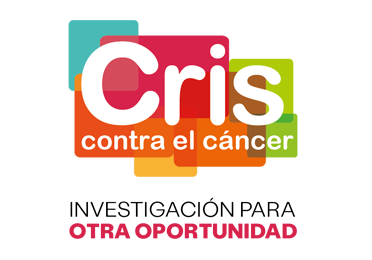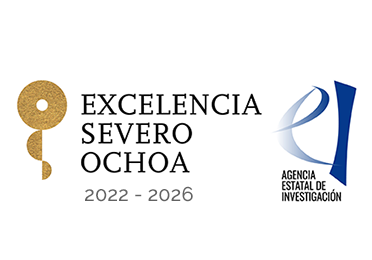
- Now published in the European Society for Medical Oncology’s (ESMO) flagship journal, Annals of Oncology, ESMO’s Clinical Practice Guideline for the diagnosis, treatment and follow-up of endometrial cancer sets out consensus recommendations and represents a reliable tool to help support clinical decision making.
- Covering clinical and pathological diagnosis, disease staging, risk assessment, treatment and follow-up, each recommendation has been developed by renowned leaders in the field based on available scientific data and the collective opinion of the authors.
- Co-authored by a multidisciplinary group of experts including VHIO’s Ana Oaknin as first author, these guidelines also provide treatment and management algorithms based on risk-groups for advanced/metastatic or recurrent disease.
Recently published as an open access Special Article in Annals of Oncology *, the flagship journal of the European Society for Medical Oncology (ESMO), ESMO’s Clinical Practice Guideline for diagnosis, treatment and follow-up of endometrial cancer represents a reliable tool to help support clinical decision making.
First authored by Ana Oaknin, Principal Investigator of VHIO’s Gynecological Malignancies Group, and Head of the Gynecologic Tumors Unit, Medical Oncology Department, at the Vall d’Hebron University Hospital (HUVH), these guidelines set out consensus recommendations developed by experts in Europe, USA and South America, each of which are based on the latest scientific data and the collective opinion of the authors.
Endometrial cancer (EC) currently ranks seventh among all female cancers with the majority of cases occurring between 65 and 75 years of age. In Europe, uterine cancer is the fourth most common female neoplasm, with an incidence varying between 12.9 and 20.2 cases per 100,000 population and a low mortality rate between 2 and 2.7 per 100,000 population. This discrepancy is due to the fact that 80% of ECs are confined to the uterus at diagnosis and present with post-menopausal bleeding, leading to the early detection of disease.
“Despite early detection in the majority of cases, mortality rates have been rising by 1.9% per year on average. This trend is mainly attributable to the increasing incidence of obesity as a major risk factor of this disease. Collective efforts are required to alleviate the burden of endometrial cancer by extending the promise of precision medicine to this particular population,” says lead author, Ana Oaknin.
Organized into five main subchapters covering diagnosis, pathology and molecular biology; staging and risk assessment; management of local and locoregional disease; recurrent/metastatic disease; and follow-up, long-term implications and survivorship, these guidelines update on recent and current studies, treatment approaches and strategies, and provide recommendations tailored to defined EC subgroups, indications and disease settings.
The authors also propose actions for the improved management of long-term side-effects and the reduction of risk of recurrence, and discuss the importance of lifestyle interventions including regular exercise, a healthy diet and weight management for all EC survivors.
“One of the main obstacles in advancing precision medicine in endometrial cancer has surrounded the traditional clinico-pathological classification of this disease. This approach represents an obstacle since clinical studies focus on targeted approaches requiring the inclusion of tumors with molecular similarities,” observes Ana Oaknin.
Drawing on previous and current studies, the Guideline authors review the feasibility, limitations and opportunities of the molecular classification of EC across tumor subtypes. In their recommendations they propose the combination of molecular classification by well-established methods in combination with targeted tumor sequencing for all EC pathology specimens, irrespective of histological type.
She continues, “Considering both the molecular and clinico-pathological features of molecular subgroups will help to extend the promise of precision medicine to endometrial cancer patients, improve the management of EC, and reduce the over and under treatment of this disease. Further, embedding molecular classification in clinical trial design will enable the comparison between groups of patients sharing similar analogous features.”
Regarding the evaluation of risk of disease recurrence in local and locoregional EC, the experts briefly discuss the integration of molecular classification with robust clinico-pathological data which has led to an updated risk classification ‘scoring’ to more accurately establish relative risk of recurrence. They suggest that this system could be used to explore adjuvant treatment with molecularly-targeted therapy within disease subgroups.
“The strong prognostic value of EC classification is also becoming increasingly evident and could ultimately help guide clinical decision making toward improved outcomes for our patients,” adds Ana Oaknin.
Addressing poor outcomes of recurrent and metastatic EC, with five-year overall survival rates of 20%-25%, the authors highlight that the treatment of these patients should always involve a multidisciplinary approach in specialized centers, and that the selection of therapy must be guided by the individual patient’s condition, extent of disease, prior lines of treatment, and molecular profile.
Highlighting novel treatments including immune checkpoint inhibitors, they point to the promise of immune checkpoint blockade combined with targeted therapies, other immune-based treatments, chemotherapy and radiotherapy, and suggest that these new approaches could potentially transform the treatment landscape of EC.
The final subchapter of these guidelines is devoted to the long-term management of patients who are diagnosed in the early stages of EC. With an excellent prognosis, a five-year survival rate of over 95% for patients diagnosed with stage I disease, many of these women will be long-term survivors. The authors highlight the importance of medical surveillance adjusted to EC risk factors, management of long-term implications and side-effects, and the promotion of healthy lifestyle choices and physical exercise.
“For all endometrial cancer survivors, surveillance and the follow-up of long-term symptoms are essential. Psycho-educational programs, regular exercise, a healthy diet and weight management must all be promoted to enhance patient wellbeing and reduce the risk of disease recurrence,” concludes Ana Oaknin.
###
Reference:
* Oaknin A, Bosse TJ, Creutzber CL, Giornelli G, Harter P, Joly F, Lorusso D, Marth C, Makker V, Mirza MR, Ledermann JA, Colombo N; ESMO Guidelines Committee. Endometrial cancer: ESMO Clinical Practice Guideline for diagnosis, treatment and follow-up. Ann Oncol. 2022 May 30:S0923-7534(22)01207-8. doi: 10.1016/j.annonc.2022.05.009. Epub ahead of print. PMID: 35690222.




















